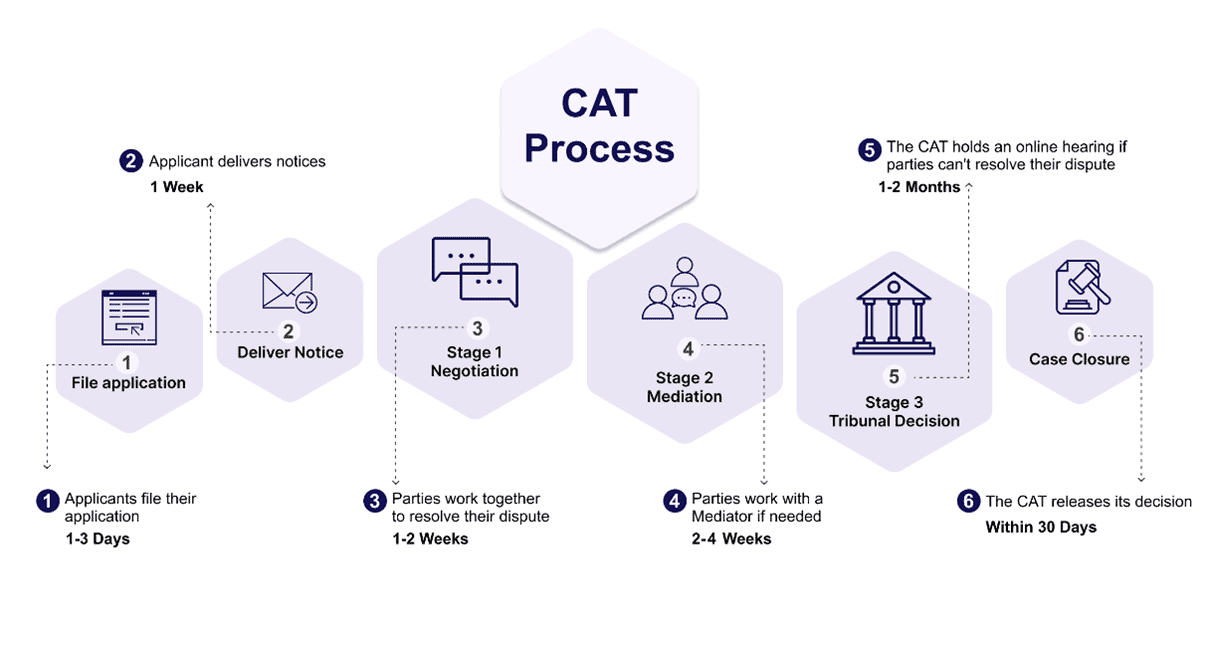Dispute Resolutions
Tribunal process
The Condominium Authority Tribunal uses an online dispute resolution system to help Ontarians resolve their condo-related disputes quickly, conveniently and affordably. The CAT system encourages everyone to work together in healthy condominium communities.
Consult our Steps to Solve Issues pages before filing an application with the Tribunal.
Steps in the Tribunal process
The Tribunal dispute resolution process has six steps:
After your case is closed there are additional options if you still have unresolved issues.
The Tribunal’s jurisdiction
The CAT can accept applications about the following types of disputes:
- Condominium Records
- Compliance with Settlement Agreements
- Disputes about provisions in a condo corporation’s governing documents involving pets and animals, vehicles, parking and storage.
- Disputes about unreasonable nuisances, annoyances, or disruptions or provisions in a condo corporation’s governing documents regarding noise, odour, light, vibrations, smoke and vapour.
- Disputes about any other type of nuisance, annoyance or disruption set out in provisions in a condo corporation’s governing documents.
- Disputes about provisions in a condo corporation’s governing documents involving indemnification or compensation relating to points 3, 4 and 5 above
